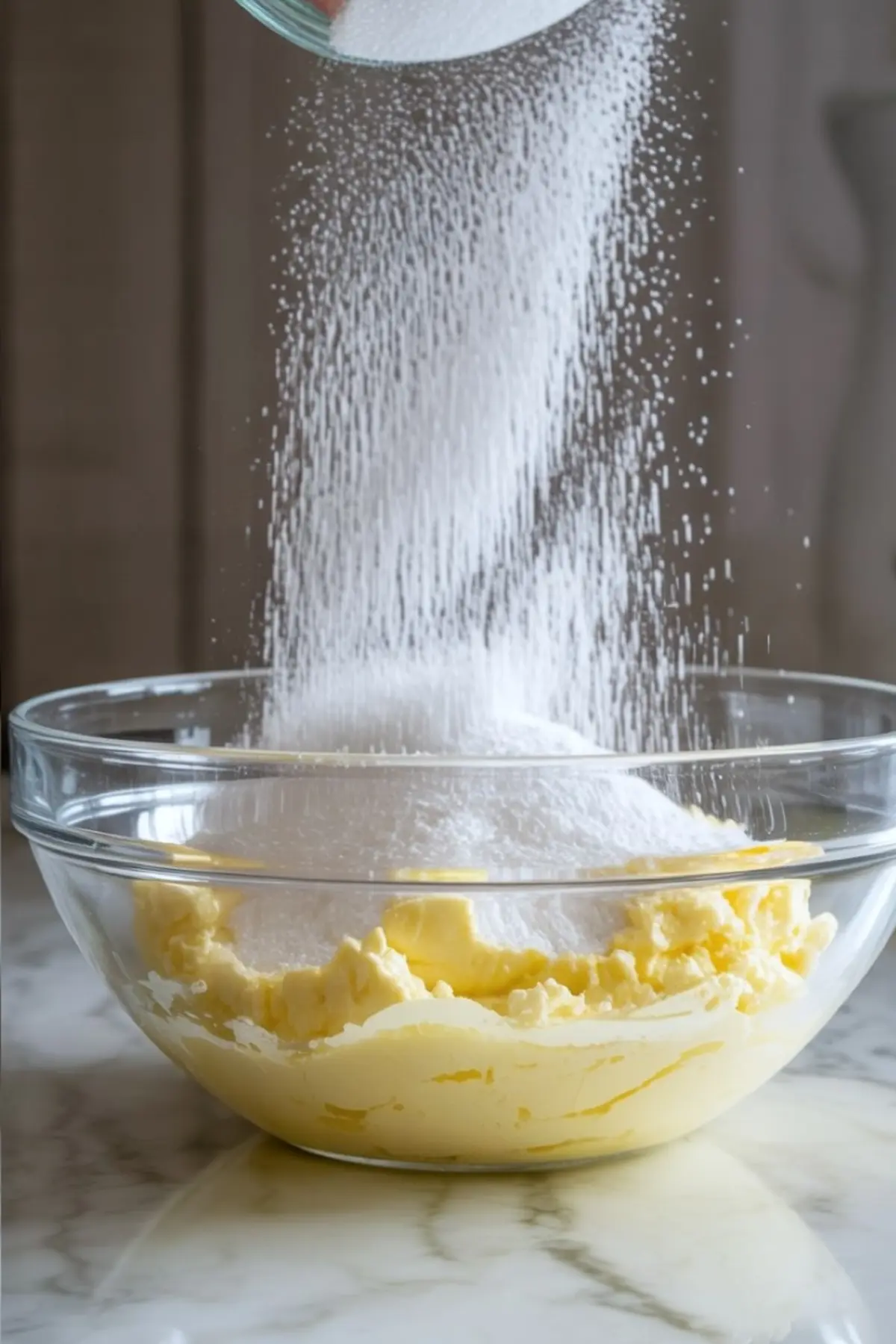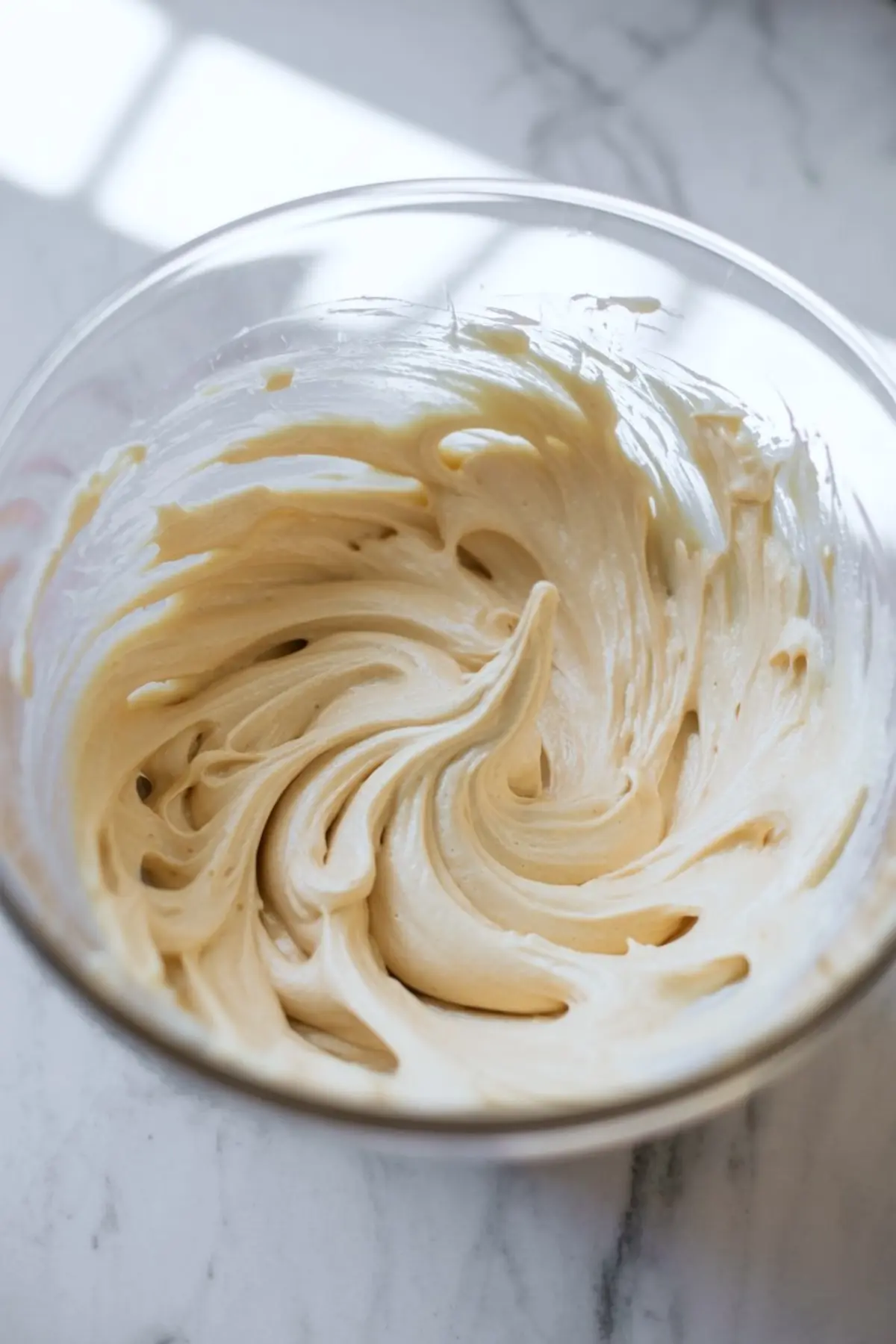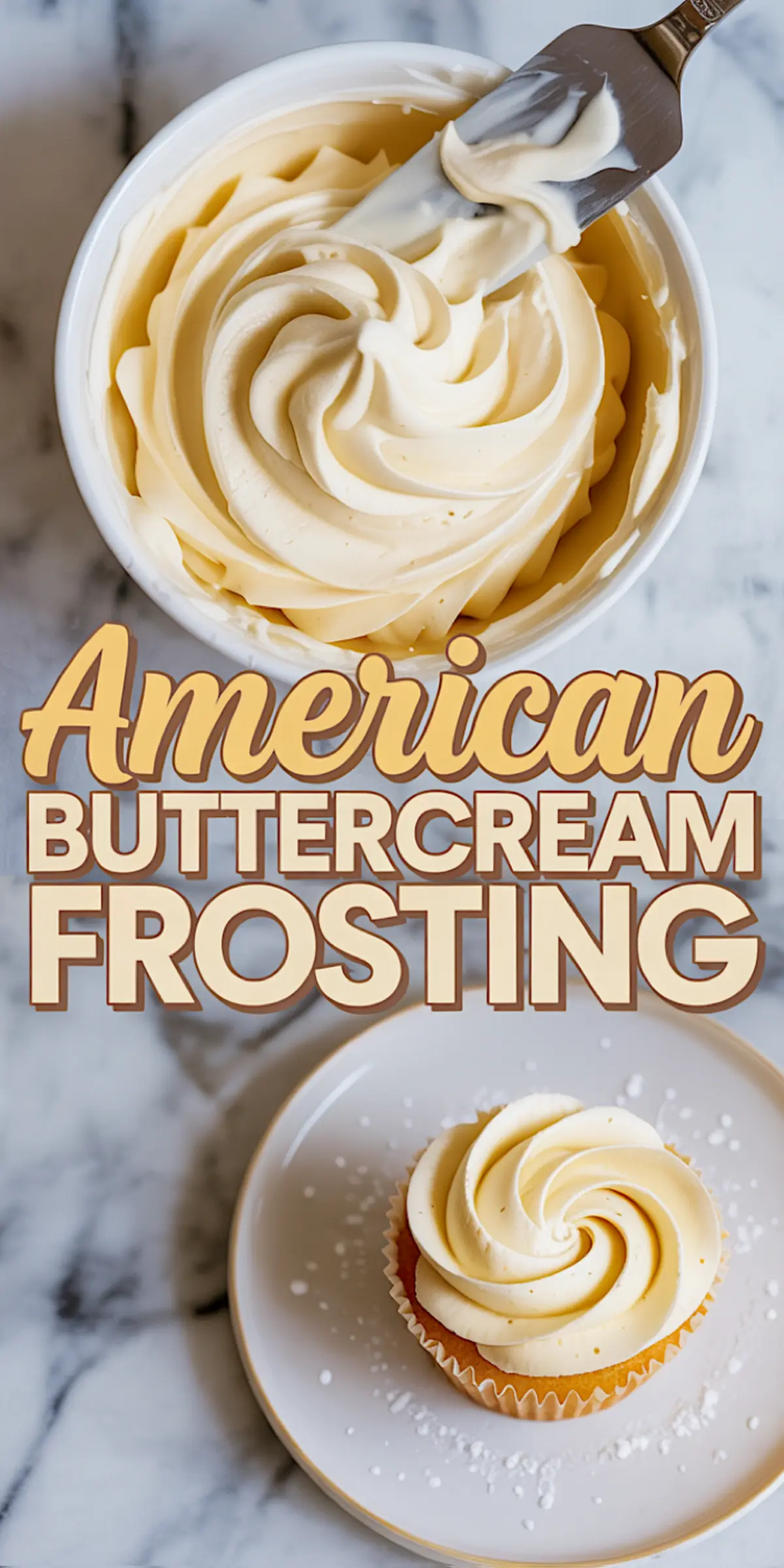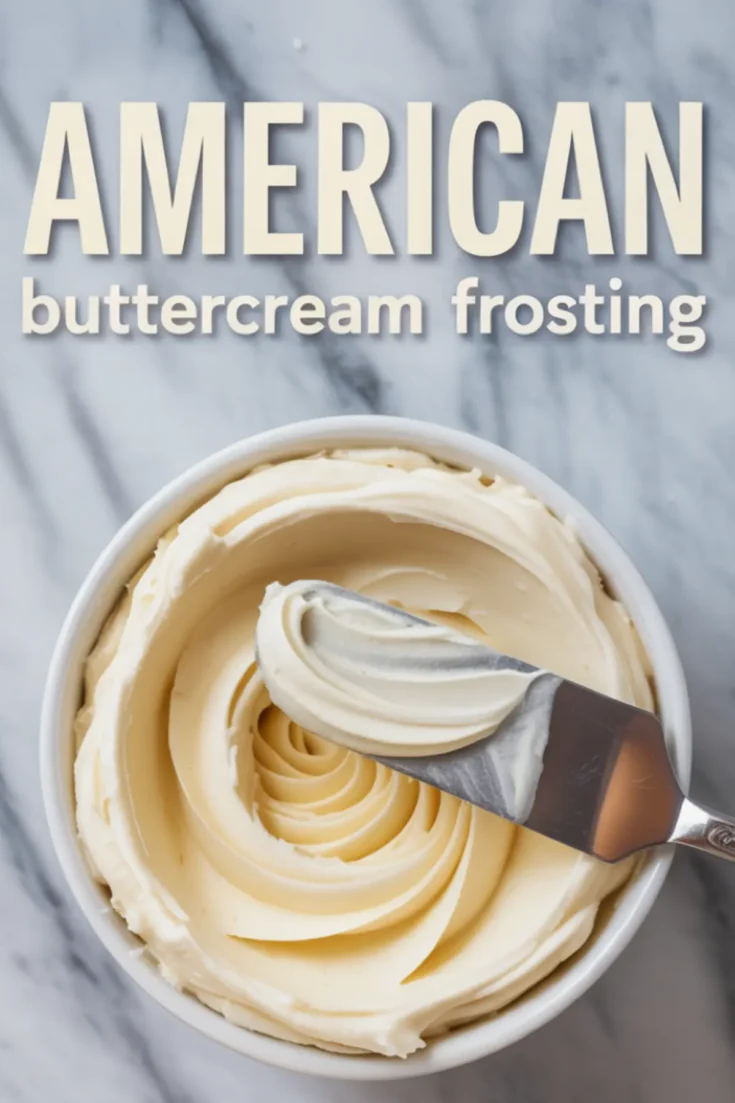This easy American buttercream frosting recipe uses four basic ingredients and comes together in just 10 minutes. It spreads cleanly, pipes with structure, and tastes as classic as a bakery cake frosting should.
You’ll use this American buttercream frosting recipe for cupcakes, cookies, birthday cakes, or any buttercream frosting cake you need finished quickly and reliably. It’s a base recipe that works straight as-is or adapts easily with flavor or color.
The ratio here favors butter over sugar just enough to keep things balanced. One cup of butter to three and a half cups of powdered sugar gives structure without overwhelming sweetness.

This is one of the reasons it remains a go-to frosting for decorators. The butter brings volume when whipped properly, and the sifted sugar builds body without grittiness. A little heavy cream finishes the texture by loosening the mix while keeping it rich.
Many American buttercream frosting recipes lean either too soft or too sugary. This version avoids both extremes. It holds firm on cookies but spreads clean on layer cakes. I don’t change this ratio.
Spotlight on the Butter

The butter matters most here. Softened, not melted. Unsalted, always. Room temperature butter whips with air and forms the base of the frosting’s structure. Cold butter won’t blend well. Melted butter loses body.
If the butter still feels firm after 30 minutes out of the fridge, cube it and let it sit another 10. When you press a finger into the stick and it leaves a slight dent, it’s ready.
Salted butter makes the final frosting taste too sharp. If it’s all you have, reduce the added salt slightly or taste after mixing.
What Each Ingredient Brings to the Recipe

The powdered sugar is non-negotiable. Sifting keeps the frosting from turning grainy. Don’t skip this step. I use standard confectioners’ sugar—no starch-heavy blends or substitutes.
Heavy cream softens and lightens the texture. Milk works, but cream gives a silkier result. If you’re working in a warm kitchen, add cream slowly and stop when the frosting feels smooth but still firm.
Vanilla extract rounds out the flavor. I use pure vanilla, not imitation. For variation, almond extract adds a subtle lift. Just a half teaspoon will do. You can also blend in cocoa powder for a chocolate buttercream version. I recommend this one here if you want it already measured out.
Mixing Steps and How It Should Look

The butter should turn pale and fluffy after 3 to 4 minutes of beating. It will look almost white. That’s the air working into the fat. Scrape the bowl. You’ll see streaks of denser butter hiding at the base. Mix again.
The powdered sugar should be added slowly. One cup at a time. Mix on low or you’ll get a sugar cloud. After each cup, beat on medium for 30 seconds, then move to the next. Once all the sugar is in, the mix will look thick but dry. That’s fine. Add the cream and vanilla and watch it transform.

At this stage, the frosting should glide easily on a spatula. If it clings too much, add a teaspoon of cream. If it’s too loose, beat it for another minute. A whipped finish means it’s ready to use.
Try this vanilla buttercream for a more neutral flavor base if you plan to pair with bold cakes.
How to Know You Got the Texture Right
The finished frosting should hold a peak. Scoop some up, flick your spatula, and see how it falls. It should keep its shape. Not stiff like meringue, but definitely structured.
If your frosting flattens out, it’s too soft. Chill it for ten minutes and beat again. If it cracks or feels dry, that usually means there’s too much sugar. Add another teaspoon of cream, mix, and test again.
The frosting should taste smooth not overly buttery or sugary. If one flavor dominates, the balance is off.
Fixing Common Problems
Too runny? Your butter may have been too warm or you added too much liquid. Chill it, then beat again.
Too thick? Add more cream, one teaspoon at a time.
Gritty texture? Likely from unsifted powdered sugar. There’s no fix for that mid-recipe. Start over or use it under fondant where texture matters less.
Too sweet? Add a pinch of salt or a teaspoon of lemon juice. Both cut sweetness without changing consistency.
Variations You Can Try
For a strawberry version, fold in 3 tablespoons of freeze-dried strawberry powder at the end. You can also use this strawberry buttercream recipe if you need precise ratios.
For a whipped version, switch to whipped cream frosting entirely if you want a lighter texture.
Add 2 tablespoons of unsweetened cocoa powder with the powdered sugar for chocolate. Or use gel food coloring to match a party theme. Start with a tiny amount and work up gradually.
Storage and Reuse Tips
Store the frosting in an airtight container at room temperature for one day. For longer, refrigerate up to a week. Bring to room temperature and rewhip before using.
You can freeze it for up to two months. Thaw in the fridge overnight, then whip again.
Frosting thickens slightly over time, so always test texture before applying.
Final Thoughts and Decorating Ideas
Use it to frost classic layer cakes or pipe onto cupcakes. It works with a wide tip for borders or tight star tips for fine detail.
I often pair this with birthday cakes, cookies, or simple cupcakes. It spreads clean on a crumb coat and pipes beautifully for decorations.
Want a holiday touch? Tint it red and use it on Santa cookies or keep it plain and smooth for rustic celebration cakes.
Save and Share Your Version

Pin this American Buttercream Frosting recipe to your cake board so you can find it anytime. If you try it or adjust it, share in the comments what worked for you. I’d love to hear how you used it.
American Buttercream Frosting

This smooth and creamy American Buttercream Frosting is a must-have for any baker. Made with just butter, powdered sugar, vanilla, and milk, it’s the go-to for topping cakes, cupcakes, and cookies. Whether you need an easy American buttercream recipe or want the best buttercream frosting for decorating, this one holds its shape perfectly and spreads like a dream. Use this reliable American buttercream frosting recipe for birthdays, holidays, or any celebration where a great cake frosting recipe is needed.
Ingredients
- 1 cup (2 sticks) unsalted butter, softened to room temperature
- 3½ cups powdered sugar, sifted
- 2 tablespoons heavy cream (or milk)
- 1½ teaspoons pure vanilla extract
- ¼ teaspoon fine salt
- Optional Add-Ins:
- ½ teaspoon almond extract
- Gel food coloring
- 2 tablespoons unsweetened cocoa powder
Instructions
- BEAT THE BUTTER: Place softened butter in a large mixing bowl. Using a stand mixer fitted with the paddle attachment or a hand mixer, beat the butter on medium speed for 3 to 4 minutes until it becomes pale, fluffy, and significantly lighter in texture. Scrape down the sides of the bowl to ensure even mixing.
- ADD POWDERED SUGAR GRADUALLY: With the mixer on low speed, add the sifted powdered sugar one cup at a time. After each addition, mix on low until combined, then increase to medium-high and beat for 30 seconds. Once all the sugar is incorporated, scrape down the bowl and beat for 1 additional minute.
- ADD VANILLA, SALT, AND CREAM: Pour in the vanilla extract, salt, and 2 tablespoons of heavy cream. Beat the mixture on medium-high for 2 to 3 minutes until the frosting is light and creamy. If the frosting is too stiff, add more cream one teaspoon at a time until the desired consistency is reached.
- ADJUST FOR TEXTURE OR COLOR: Add gel food coloring, almond extract, or cocoa powder at this stage if using. Mix well on medium speed until fully blended and smooth. Use immediately or store in an airtight container.
Notes
For a chocolate version, mix in 2 tablespoons of unsweetened cocoa powder with the powdered sugar. Frosting can be made ahead and stored at room temperature for up to 1 day or refrigerated for up to 1 week. Bring to room temperature and rewhip before using.

